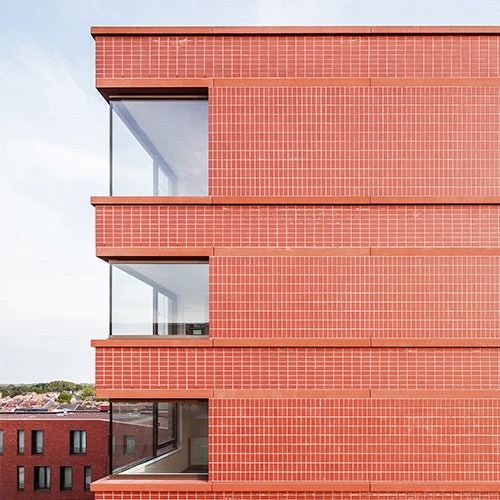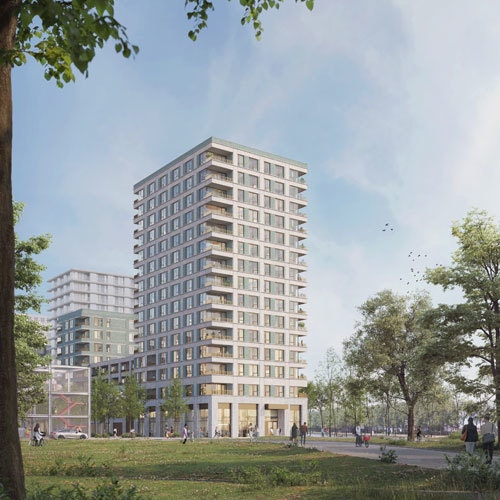Sint-Jansbergsesteenweg
Collective housing
Urban vision and architectural development of a new, nature-regenerative neighbourhood comprising 400 homes on the outskirts of Leuven. The project is defined by a forested landscape that brings together a diversity of housing types, sustainable design strategies, and shared community spaces. For this project, our design divisions B-architecten and B-city are joining forces.
A landscape as foundation
Our design embraces the forest as central framework of the masterplan. This publicly accessible woodland forms the heart of the neighbourhood and acts as a connective structure between the surrounding built areas.
Housing is arranged in compact clusters around open clearings in the forest. These small-scale neighbourhoods make living in the forest tangible: they offer both a sense of shelter and community, with a legible scale that encourages social interaction. The district is car-light, with the housing clusters fully enveloped by woodland and structured around a clear network of pedestrian and cycle routes.
This spatial arrangement gives rise to three distinct residential atmospheres: living in the forest, at its edge, or along the street. The resulting mix of typologies supports a diverse and inclusive community, responding to a range of living needs.
Topography as guiding principle
The natural soil structure and water management of the site underpin the design. Local topographical features — such as sunken lanes and sloping ridges — are used to gently organise access across the site, avoiding abrupt level changes. Rainwater is absorbed or reused on site through a thoughtful combination of gently undulating terrain, porous forest soil and strategic planting.
This blue-green approach makes the neighbourhood climate-resilient and future-proof, with a strong focus on biodiversity and natural cycles.
A sustainable living environment
The neighbourhood includes a range of social housing, affordable homes and accommodation linked to KU Leuven. The architecture responds sensitively to its context: building heights are attuned to light, views and open space; paved surfaces are minimised; and durable, natural materials are prioritised. The energy strategy is entirely fossil-free, relying on solar and geothermal sources.
Mobility is designed around active travel. The district is largely car-free, with generous cycle storage and compact, semi-underground car parking for residents. Visitors park on a limited number of designated surface spaces along the perimeter.
With this design, we are shaping a lively, open and ecologically connected part of the city — a neighbourhood where forest, living and community are deeply intertwined, ready to take root and grow, in and with Leuven.















